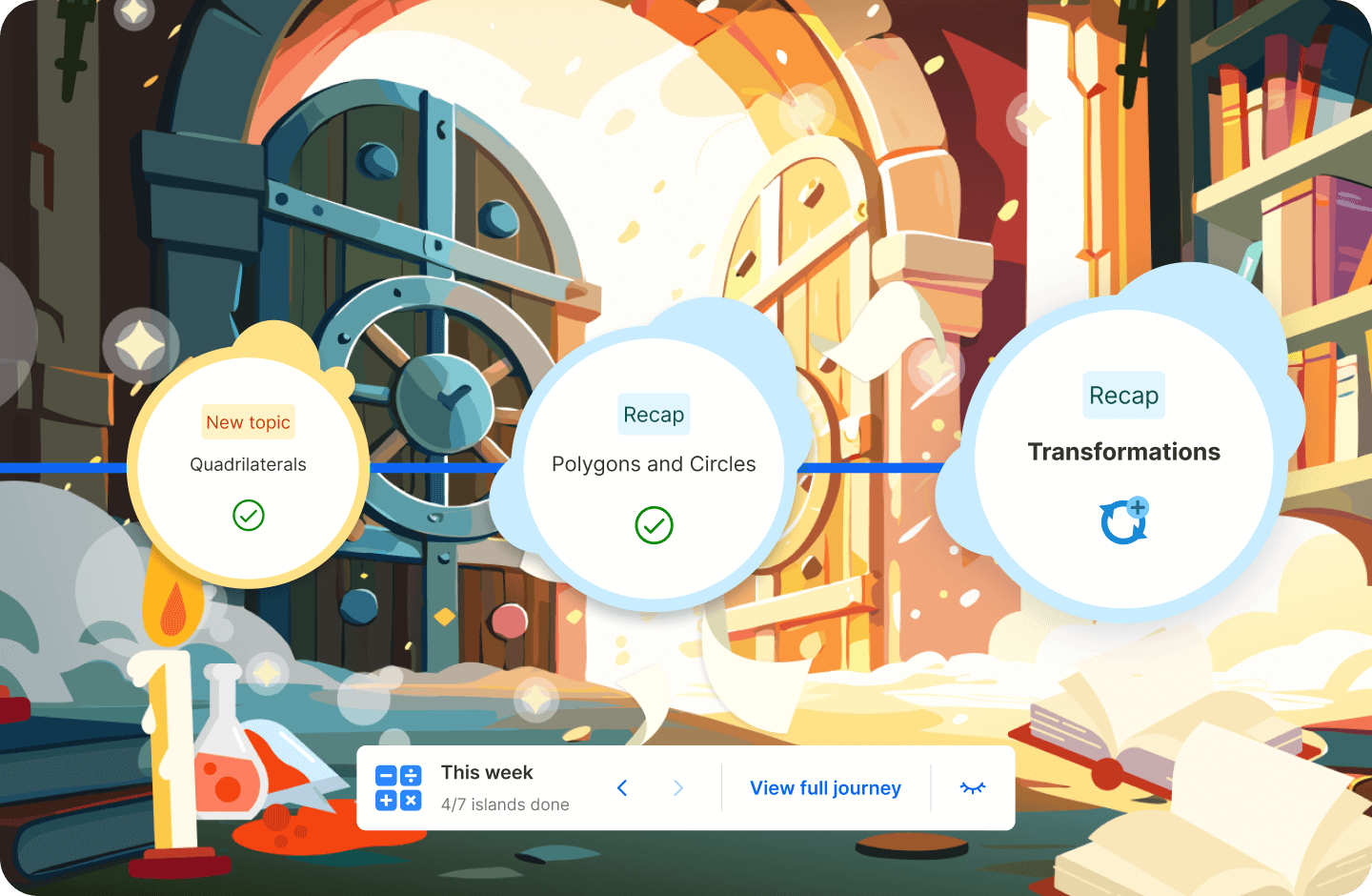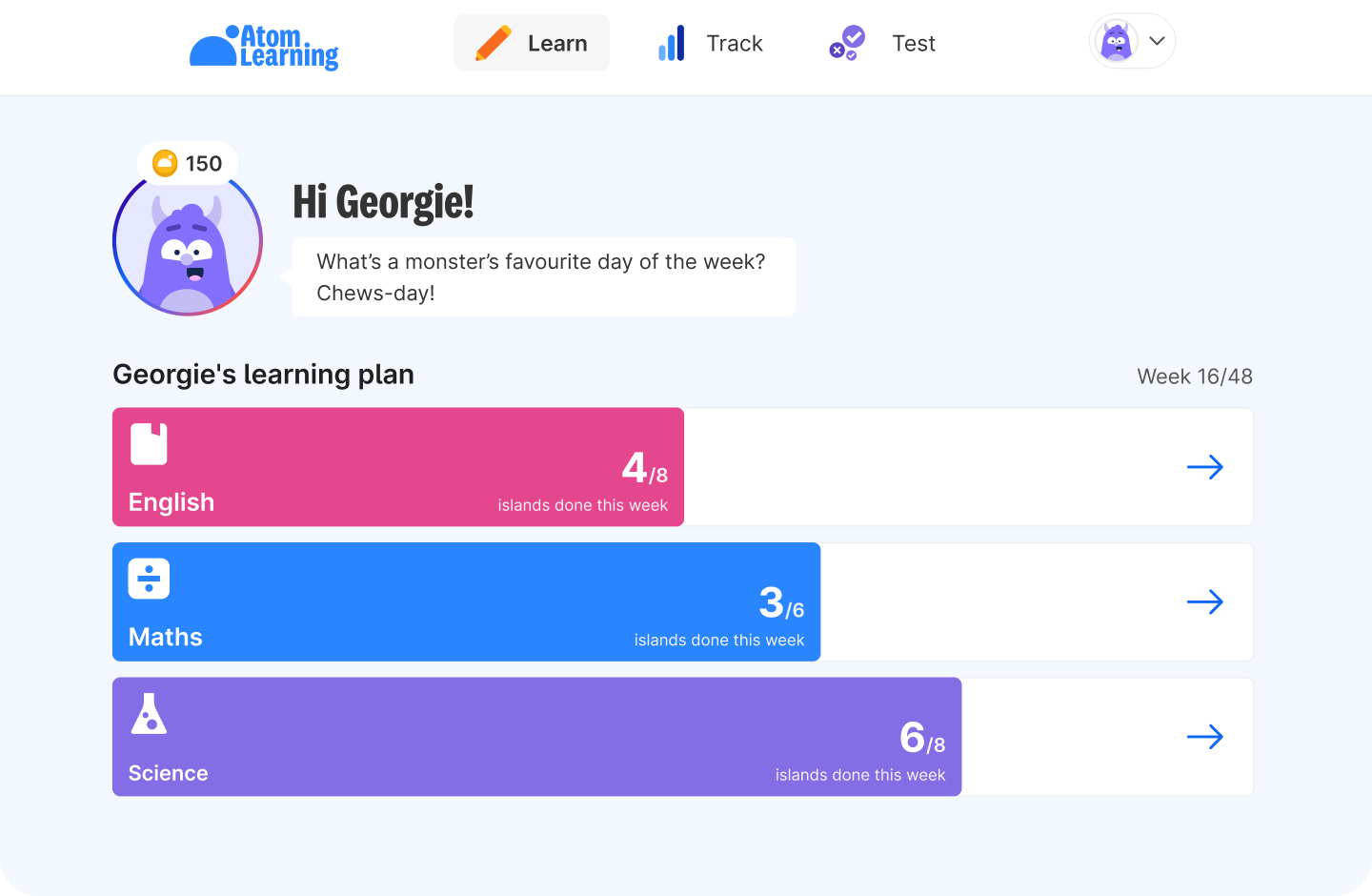Fractions are introduced at the start of the Key Stage 2 curriculum and are often a challenging topic for many children (and parents!) to understand. This guide will help you and your child learn:
- The basics of fractions and how to use them at home
- Fractions topics your child will be taught at school
- How to answer common fractions questions (with free downloadable worksheets)
What are fractions and why do we learn them?
Fractions are parts of a whole. A fraction is displayed as a numerator, which is written above the dividing bar, and a denominator, written below the bar. The denominator shows us how many equal pieces the whole is split into, and the numerator tells us how many pieces we have.
Understanding how fractions work is a skill that helps with more advanced maths later in life – not to mention daily tasks. Learning about fractions will help your child understand financial activities, such as adding up money and splitting a bill, working out measurements when cooking, and understanding the time.
How to introduce your child to fractions
An easy and practical way to introduce your child to fractions is to build questions about fractions into daily life. Here are some examples to help your child at home.
Measuring time
- If a singing lesson lasts 30 minutes, what portion of an hour is this?
- I have ¾ of an hour until I need to catch the bus. How many minutes do I have?
- Dinner will take 20 minutes to prepare, and another 20 minutes to cook. What portion of an hour will dinner take in total, as a simplified fraction?
Cooking and baking
- This cake is cut into 8 equal slices, and I would like to take ¼ of the cake to work. How many slices do I need to allocate?
- John would like ½, Sally would like ⅓ of a pizza, and Ahmed would like ¾ of a pizza. How many whole pizzas do I need to order so that there’s enough for everyone?
- This week I want to make a smoothie which needs ½, pancakes which need ⅔ of a banana, and a banana loaf which requires 1 and ⅓ bananas. How many bananas do I need to buy?
Making purchases
- A packet of pasta normally costs 90p, but today’s special deal means I can get a discount of ⅓. How much will the pasta cost after the deal is applied?
- My car has a tank which can hold 40 litres. I want to fill it so that it’s ¾ full. How many litres of fuel do I need to put into the tank?
- I’ve been given a £50 gift card. I spend £30 on a pair of trousers, and £5 on a belt. What portion of my gift card do I have left, as a simplified fraction?
What will my child learn in Years 3–6?
Year 3
By the end of Year 3, your child will have been taught to count up and down in tenths. They should be starting to recognise and use fractions as numbers, and show – using diagrams – equivalent fractions with small denominators.
They will also have been taught to add, subtract, compare and order fractions with the same denominator.
Year 4
At the end of Year 4, your child will have been taught to recognise and show families of common equivalent fractions. They’ll move up to counting in hundredths and start to solve problems using fractions to divide quantities.
They'll be introduced to decimals and will learn how to write decimal equivalents, round decimals to the nearest whole number, and compare numbers with the same number of decimal places. Simple measure and money problems will be common questions at this point.



